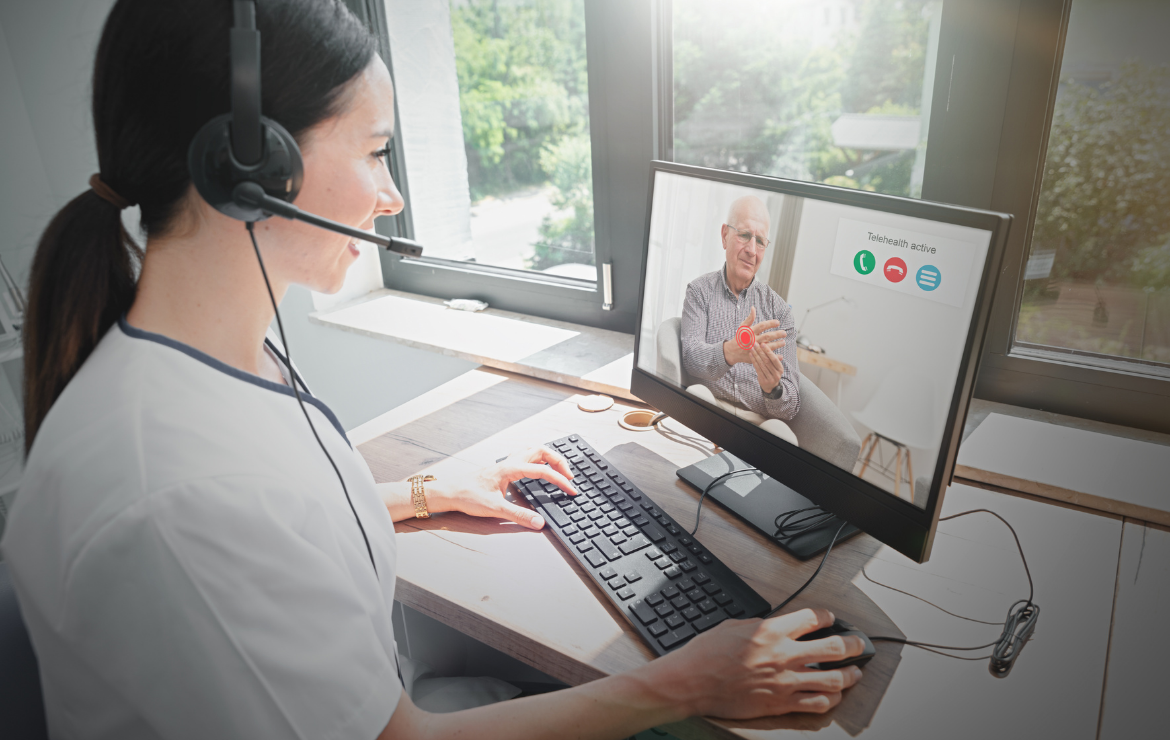In recent years, telemedicine has been growing in popularity around the world. In the United States, telemedicine and telehealth services have been on a sustained upward trend due to rising demand for healthcare services amid the COVID-19 pandemic. Telemedicine is particularly beneficial in long-term care facilities where a significant number of Americans living with chronic conditions such as non-healing wounds reside. With the ubiquity of technology and ease of use with IT solutions, the telemedicine industry is here to stay.
What is Telemedicine?
Telemedicine is the process of delivering health-related services and information between healthcare providers and patients electronically without being present in the same place. It allows for remote clinician-patient contact, monitoring, medical advice, ordering of medical and pharmaceutical products, continuous patient education, and more. Telemedicine typically requires an internet-enabled device, such as a smartphone or tablet having a video camera, and a platform for storing electronic medical records of the patient. Clinicians can then speak to patients, assess patients' physical state of their health (through pictures or live video), and prescribe suitable treatments or products.
Why Telemedicine is Beneficial in Long-term Care Facilities
Studies have revealed significant benefits of leveraging electronic health information and telecommunication technologies for clinical continuity at long-term care facilities. Reports suggest that patients living with chronic health conditions such as diabetes, stroke, congestive heart failure, and chronic non-healing wounds experienced satisfaction with the level of care they received. Moreover, telemedicine has helped to slow or reverse the progression of chronic health conditions, reduced mortality rates, and significantly reduced the number of hospital visits for most patients.
Patients living with chronic non-healing wounds such as diabetic ulcers, pressure ulcers, and venous insufficiency ulcers require regular visits to nursing homes to see their physicians. Ordinarily, during times where movements are limited (e.g., the nationwide lockdown due to COVID-19), many patients will be unable to access the medical care they need. But, fortunately, with telemedicine, they can have unrestricted access to their physicians and would only need to visit the hospital in severe cases.
The Main Telemedicine Methods for Wound Care
A report by Dr. Ravi K. Chittoria, published in the Indian Journal of Medicine, outlines the following methods for wound management using telemedicine:
- Real-time video conferencing
- Use of mobile or cellular devices
- Storing and forwarding of electronic health-related information
Real-time Video Conferencing
In this method, a patient initiates a video call with a wound care expert on a secure telemedicine platform, and both parties interact in real-time. The physician will, through video and high-definition pictures, assess the state of the patient's wounds, offer advice for care at home, remotely order wound care dressings, and instruct the patient on how to apply them. According to research, real-time video consultations for wound care have a diagnostic accuracy of 67-80% compared to in-person appointments with a wound care expert.
Portable Devices
Portable telecommunications devices such as smartphones and tablets are excellent for telemedicine. With an in-built camera, mobile devices can capture high-quality images of patients' wounds that an expert can examine or diagnose with a high degree of accuracy. Mobile devices have up to 90% diagnostic accuracy, compared to in-person appointments with a wound care expert.
Electronic Medical Data Storage
In this method, a patient's medical information is stored electronically on a secure platform such as the cloud, where a wound care expert can later access it. However, the patient and physician do not need to be present at the same time. The storage option is relatively cheaper compared to other telemedicine methods. However, diagnoses or monitoring may be less accurate or outdated since physicians do not obtain the information in real-time.
Is Patients' Health Information Secure? HIPAA and Telemedicine
The Health Insurance Portability and Accountability Act (HIPAA) was enacted by Congress to protect patients' personal health information (PHI) during transmission, modification, and storage on electronic platforms. Telemedicine platforms that handle PHI may need to meet HIPAA guidelines, depending on how they access patients' data.
The HIPAA Security Rule protects PHI in the following ways:
- Only authorized telemedicine providers have access to PHI.
- Patients and wound care providers interact over a secure channel of communication.
- Security plans put in place to prevent breaches in telemedicine platforms that use, transmit, and store PHI.
The Wound Pros Leads Efforts in Telemedicine for Wound Care
The Wound Pros offers a HIPAA-compliant telehealth platform for care experts to connect with patients remotely and securely with a vibrant community of wound care experts. As part of measures aimed at mitigating the spread of COVID-19 at nursing homes, The Wound Pros has also developed an app for remote vitals monitoring and wound measurement "RITA." The AI-powered app is compatible with mobile devices such as smartphones and tablets, utilizing the device's camera to capture images of their wounds that experts can access remotely. Moreover, it can scan variations in heart rate variability (HRV), respiratory rate, mental stress, oxygen saturation, and blood pressure (soon to be added) to predict COVID-19 status.



.webp)

.avif)